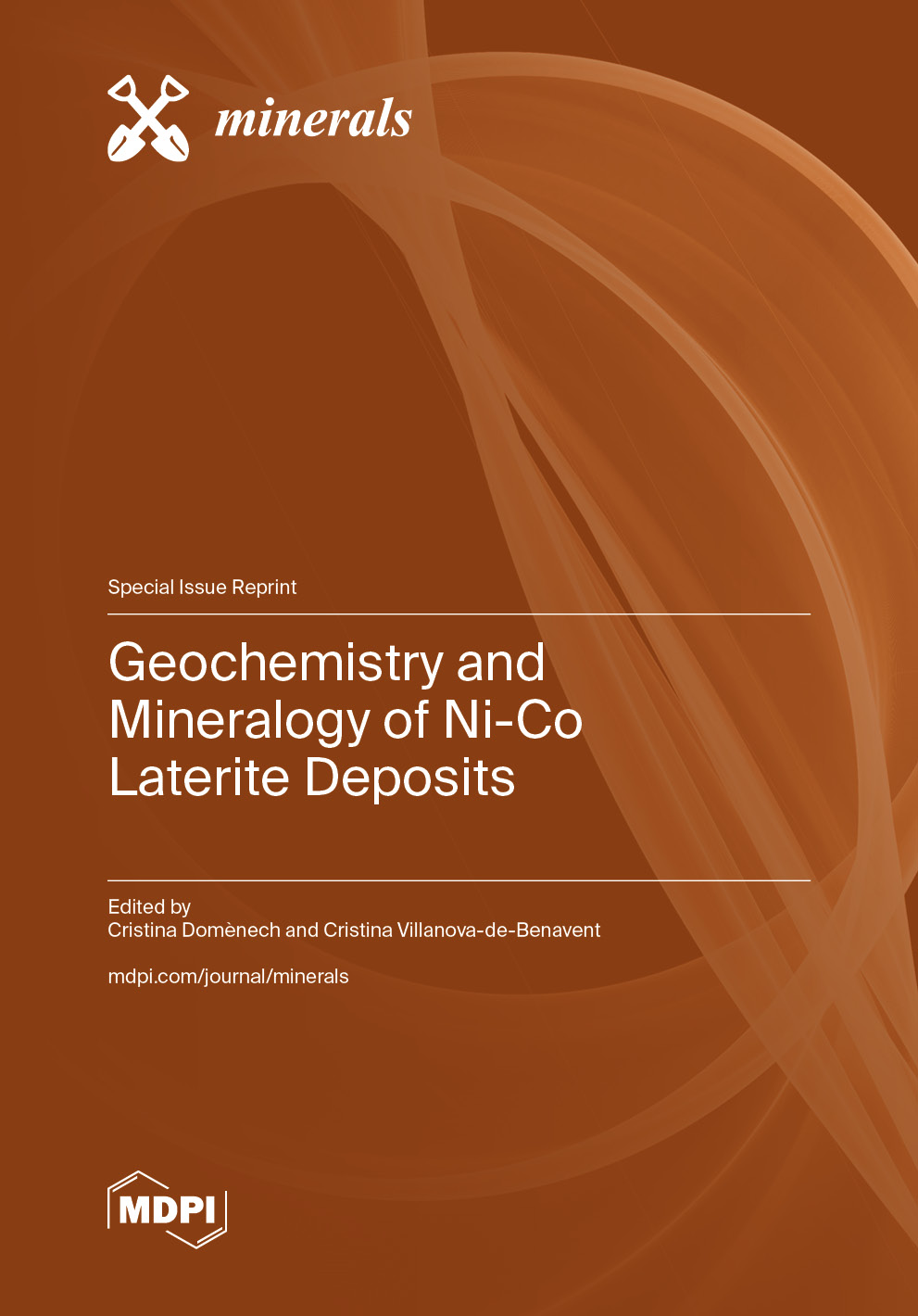Geochemistry and Mineralogy of Ni-Co Laterite Deposits
A special issue of Minerals (ISSN 2075-163X). This special issue belongs to the section "Mineral Deposits".
Deadline for manuscript submissions: closed (16 December 2022) | Viewed by 30434
Special Issue Editors
Interests: reactive transport modelling of water-rock interaction and mineral deposits formation; thermodynamic data base development; thermodynamics and kinetics of natural waters; groundwater and soil pollution; geochemical behaviour of heavy and trace elements
Interests: geochemistry; mineralogy; mineral chemistry and ore forming processes in Ni-Co(-PGE) laterite deposits; REE bauxites; ion adsorption REE deposits; Fe-Ti(-V) oxide anorthosite complexes
Special Issue Information
Dear Colleagues,
Ni-Co laterites, which are regoliths formed after the chemical weathering of ultramafic rocks in tropical-subtropical regimes, have been the subject of study for many decades. This has provided a good picture of their structure, element distribution and mineralogy, especially of Ni-bearing minerals (e.g., garnierites, Ni-serpentines, Ni-smectites, asbolane-lithiophorite, Fe-oxyhydroxides). Interestingly, in the last decade, Ni-laterites experienced a comeback in the literature, for many reasons.
Recently, Ni-Co laterites have surpassed Ni-sulphides as the main source of Ni, accounting for about 50% of the current world's Ni production and hosting close to 60% of the world’s land-based resources. In addition, the improvement of the existing analytical techniques, and the appearance of new ones, have shed light on some of the unknowns, and given new perspectives. In particular, it has been revealed that, besides Ni, these laterite deposits usually contain other elements that are becoming more and more demanded (so-called critical metals or high-tech elements). Ni-laterite deposits are worthy targets of Co, Sc and/or platinum group elements (PGE).
However, there are still a lot of unknowns regarding the mobility of elements, the mineralogy and/or the environmental impact of Ni-Co laterite deposits, and it is of crucial importance to solve some of the uncertainties which have arisen from previous investigations.
The main objective of this Special Issue of Minerals is to publish the latest research on trace element geochemistry, and minerals containing Ni and/or critical metals (e.g. Co, Sc, PGE, REE…) found in Ni-laterite deposits, including their tailings, in order to provide new information about their texture, chemical composition, crystal chemistry, and genesis, which is paramount to improving the efficiency for the recovery of target elements.
We both kindly encourage you to join us. Let's make this issue a highly referenced one!
Dr. Cristina Domènech
Dr. Cristina Villanova-de-Benavent
Guest Editors
Manuscript Submission Information
Manuscripts should be submitted online at www.mdpi.com by registering and logging in to this website. Once you are registered, click here to go to the submission form. Manuscripts can be submitted until the deadline. All submissions that pass pre-check are peer-reviewed. Accepted papers will be published continuously in the journal (as soon as accepted) and will be listed together on the special issue website. Research articles, review articles as well as short communications are invited. For planned papers, a title and short abstract (about 100 words) can be sent to the Editorial Office for announcement on this website.
Submitted manuscripts should not have been published previously, nor be under consideration for publication elsewhere (except conference proceedings papers). All manuscripts are thoroughly refereed through a single-blind peer-review process. A guide for authors and other relevant information for submission of manuscripts is available on the Instructions for Authors page. Minerals is an international peer-reviewed open access monthly journal published by MDPI.
Please visit the Instructions for Authors page before submitting a manuscript. The Article Processing Charge (APC) for publication in this open access journal is 2400 CHF (Swiss Francs). Submitted papers should be well formatted and use good English. Authors may use MDPI's English editing service prior to publication or during author revisions.
Keywords
- Ni-Co laterite
- Garnierite
- Ni-bearing goethite
- Sc-bearing goethite
- Asbolane
- Lithiophorite–asbolane “intermediates”
- Platinum group minerals







